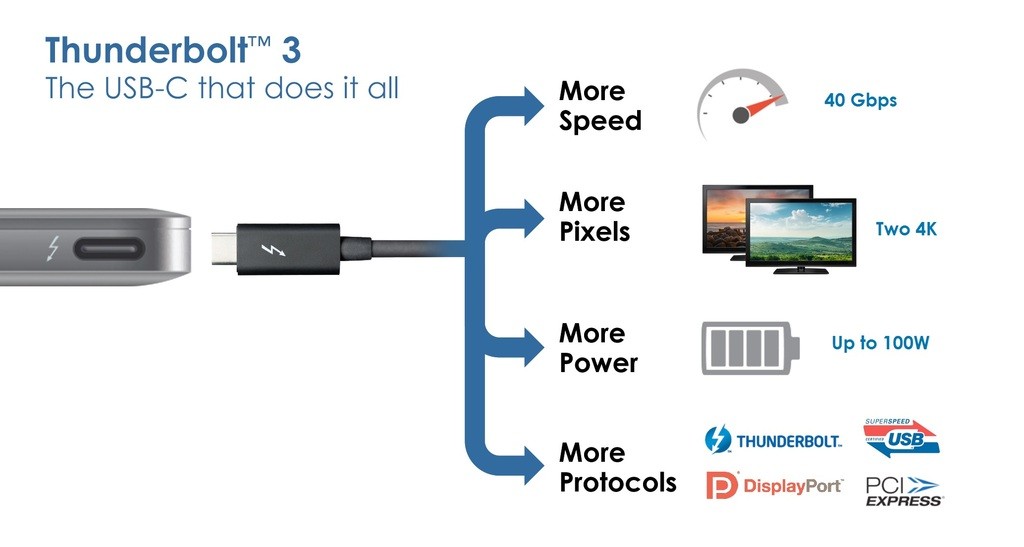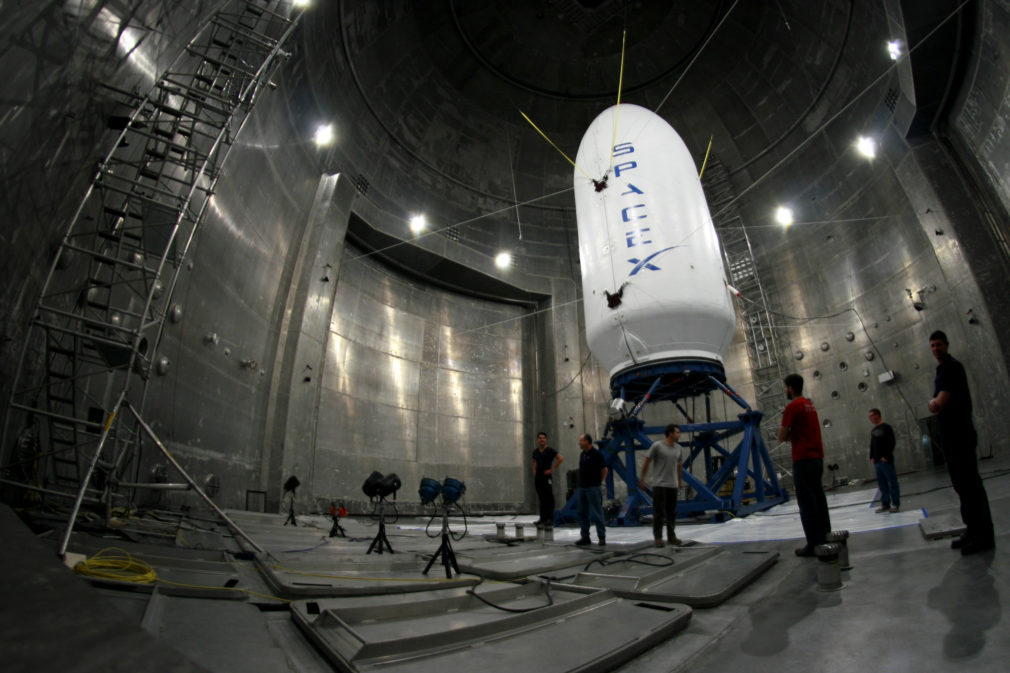As USB-C is steadily gaining universal acceptance, Intel is taking a much-needed step in the right direction. The chipmaker today announced that its ‘do it all’ Thunderbolt 3 connector port is now being made widely available — through two important choices. It has not only decided to integrate the technology into its chips but also make the standard available to anyone who wants to use the same in their hardware products.
Earlier, you required an additional powerful processor to make this connector work on the handful of devices it was made available on. Other hardware makers adopted the simple USB-C to extend the updated specification to its consumers. But, they’ll now be able to integrate the Thunderbolt 3 port into their devices because of the technology being baked right into the processor.
Also, Intel is not keeping the Thunderbolt 3 technology locked within a safe in its headquarters. By the next year, the chipmaker has plans to make this protocol specification available under a ‘non-exclusive, royalty-free license’ to everyone in the industry. Even the company’s rivals can adopt the new connector technology and integrate Thunderbolt 3 ports into its future chips. This will also push the envelope on accessories and cables, which haven’t been standardized as of yet.
Releasing the Thunderbolt protocol specification in this manner is expected to greatly increase Thunderbolt adoption by encouraging third-party chip makers to build Thunderbolt-compatible chips.
If you’re thinking that why are we aggressively pushing for acceptance of Thunderbolt 3 then you should know that it is crazy fast. It comes equipped with pseeds of around 40 Gbps, which means you can 4K movies in just 30 seconds. The port is compatible existing technologies and can seamlessly connect to Thunderbolt devices, every display, and billions of USB devices. And over 180 Intel PCs now offer Thunderbolt 3 support with another 30 expected by the end of this year.
We’ve already seen Thunderbolt 3 ports on the MacBook Pro devices launched the previous year. This is because Intel and Apple have always collaborated on molding the future of Thunderbolt technology and same was the case with this port. Commenting on the same, Dan Riccio, Apple’s senior VP of Hardware Engineering said:
Apple and Intel have collaborated on Thunderbolt from the beginning, and as the industry leader in its adoption, we applaud Intel’s efforts to integrate Thunderbolt technology into its CPUs and open it up to the rest of the industry.
While some have been quick to adopt the USB-C technology, other like Microsoft are still wary and believe the ecosystem needs to be more developed before we’re ready for these ports. Well, today’s move from Intel pushes Microsoft’s apprehensions out the door and calls every hardware maker to accept this framework with open arms.
The USB-C ports have been found missing on all its latest hardware, namely the Surface laptop and Surface Pro tablet, even though Microsoft has enabled ‘Thunderbolt 3 device plug-and-play support’ with Windows 10 Creators Update. Redmond is now working closely with Intel to elevate the experience of its future hardware devices. Talking about the same, Roanne Sones, general manager, Strategy and Ecosystem for Windows and Devices at Microsoft said:
Microsoft and Intel are working together to enable Thunderbolt 3 on Windows PCs to deliver on the ‘if it fits, it works’ potential of USB-C.
This action plan means that the Thunderbolt 3 port, which is way more powerful than a traditional USB-C port, could soon become ubiquitous if hardware and chipmaker accept Intel’s offer. Cross your fingers, so we can witness the advent of this technology in the industry soon enough.






